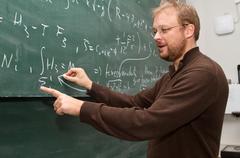URL: https://www.desy.de/news/news_search/index_eng.html
Breadcrumb Navigation
[LgDashBoard2@/e409/e116959/e119238][getObjProperty]: key=title[py] Traceback (most recent call last): File "/home/zeoclients/parts/products/zms/_objattrs.py", line 679, in getObjProperty value = metaObjAttr['py'](zmscontext=self) File "/home/zeoclients/parts/zope2/lib/python/Shared/DC/Scripts/Bindings.py", line 313, in __call__ return self._bindAndExec(args, kw, None) File "/home/zeoclients/parts/zope2/lib/python/Shared/DC/Scripts/Bindings.py", line 350, in _bindAndExec return self._exec(bound_data, args, kw) File "/home/zeoclients/parts/zope2/lib/python/Products/PythonScripts/PythonScript.py", line 328, in _exec result = f(*args, **kw) File "Script (Python)", line 6, in LgDashBoard2.title UnicodeDecodeError: 'ascii' codec can't decode byte 0xe2 in position 25: ordinal not in range(128)
News
News from the DESY research centre
Jensen Prize goes to DESY’s Alexander Westphal
DESY scientist Alexander Westphal has been awarded the J. Hans D. Jensen Prize by the University of Heidelberg for his outstanding contributions to string theory. Dr Westphal is particularly interested in the phenomenon known as inflation, which is believed to have caused the size of the universe to increase by a factor of at least one hundred septillion within the first fraction of a second after the Big Bang.

DESY-Physiker Dr. Alexander Westphal. Photo: Marta Mayer/DESY
String theory has an abundance of solutions, which describe different possible universes exhibiting different physical laws that would be are observable under the experimental conditions that are accessible to us. This also means that a whole range of possible inflation models exists in string theory. One of the main difficulties with testing the theory is that these strings are so small as to be so far beyond the realm of the kind of laboratory experiments that can currently be performed. However, the connection between string theory and inflation, which Westphal studies, may become testable in the future by measurements of subtle polarization patterns in the cosmic microwave background radiation (CMB).
The J. Hans D. Jensen Prize was called into being to mark the 100th birthday of the Heidelberg physicist and Nobel Prize winner, and has been awarded annually since 2008 to outstanding scientists working in the field of theoretical physics. The prize is linked to a research sabbatical at Heidelberg’s Ruperto Carola University. The Jensen Prize was established and is funded by the Klaus Tschira Foundation, which promotes research activities and school projects in the field of applied computer sciences, in the natural sciences and in mathematics, and supports teaching at state-run and private universities.
J. Hans D. Jensen (1907-1973) worked as a theoretical physicist and developed the shell model of the atomic nucleus, together with Maria Goeppert-Mayer, thereby contributing crucially to our understanding of the properties of lighter nuclei. For this achievement, Jensen and Goeppert-Mayer were awarded the Nobel Prize in Physics in 1963. After 1949, Jensen primarily worked at the University of Heidelberg.



